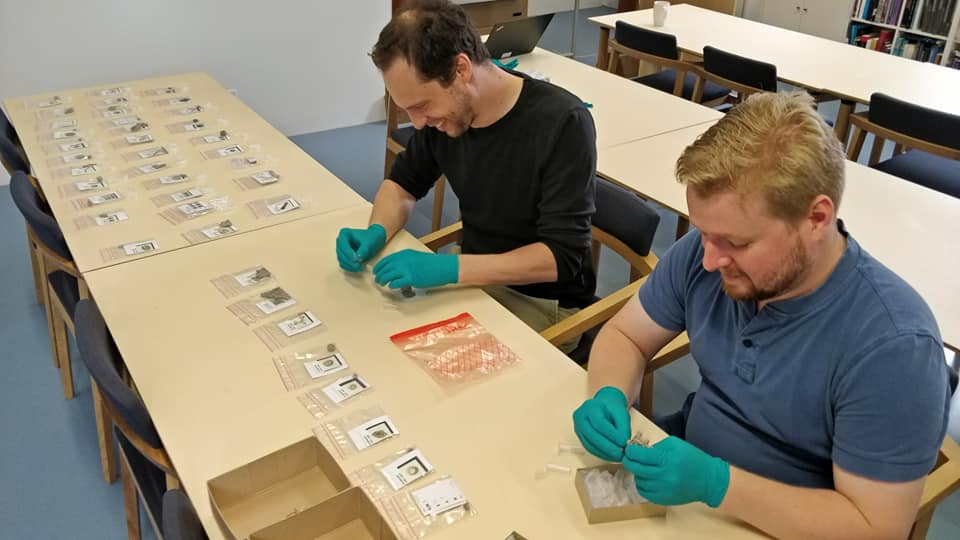Rubbing Ribe’s lead artefacts for provenancing
By Assistant Professor Thomas Birch.

Assistant Professor Thomas Birch has been sampling lead artefacts from Ribe for the Northern Emporium Project and UrbNet’s research into metal networks. The objective is to determine the origin of some of the lead metal used in different artefacts, including weights, seals and scrap.
It was not possible to drill all the samples, so Thomas Birch had to revive an old sampling technique not in use since the 1970s known as ‘rubbing’. By developing his own abrasive quartz rods, Thomas Birch has successfully created an easy means to obtain samples from the surface of artefacts for lead isotope analysis. He uses one quartz rod to remove any surface corrosion, exposing the fresh metal underneath, then a second quartz rod to obtain clean metal. The metal sample adheres to the quartz rod as it is being rubbed against the artefact. The samples are then prepared for both chemical and lead isotope analysis at the Aarhus Geochemistry and Isotope Research Platform (AGiR).
Could the lead come from the famous lead mines of England? Or perhaps from other well-known galena deposits from continental Europe? Soon, the results will be known, helping contextualise Ribe in its wider material and communication networks.
